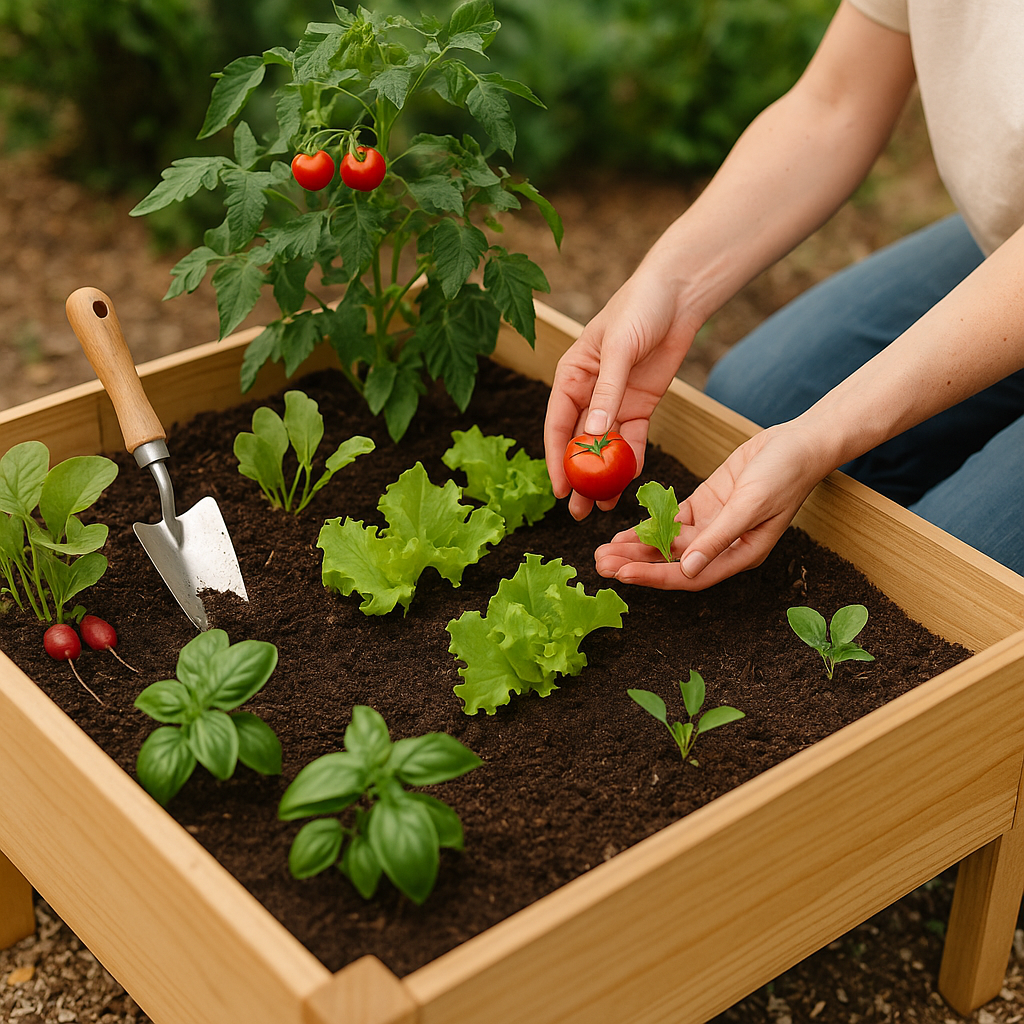
From Seed to Harvest: Beginner’s Guide to Growing Your Own Vegetables
Share
There’s something magical about growing your own food — watching tiny seeds sprout, nurturing them through the seasons, and finally harvesting crisp greens, juicy tomatoes, and fresh herbs right from your garden.
Whether you have a backyard plot, raised beds, or just a few containers on a sunny balcony, growing vegetables is simpler (and more rewarding) than you might think. Here’s your step-by-step beginner’s guide to going from seed to harvest — no green thumb required.
1. Start Small — Pick Your Easy Growers 🌱
The best gardens begin with the right mindset: start small and grow what you’ll actually eat. Choose vegetables that are low-maintenance, fast-growing, and beginner-friendly.
Great starter vegetables:
-
Lettuce & Spinach: Quick-growing, harvest in weeks.
-
Radishes: Perfect for impatient gardeners — sprout in 3–5 days.
-
Tomatoes: Thrive in pots or garden beds with good sunlight.
-
Zucchini & Cucumbers: High yield and forgiving to grow.
-
Herbs: Basil, parsley, and cilantro grow beautifully indoors or outdoors.
Pick 3–5 types for your first season, and once you master those, expand your garden next year.
2. Choose the Right Spot 🌞
Vegetables need at least 6–8 hours of sunlight per day. Pick a location with good drainage and protection from harsh winds.
If you’re working with a small space, use containers or raised beds. They warm faster, drain well, and let you control the soil quality.
Pro Tip: South-facing areas tend to get the best light in most regions. Watch how the sun moves through your yard or balcony to find the ideal growing spot.
3. Prepare the Soil — The Foundation of Growth 🌾
Healthy plants start with healthy soil. Loosen the top 8–12 inches of soil, mix in organic compost or aged manure, and remove rocks or weeds.
If you’re using containers, fill them with high-quality potting mix (not regular garden soil). Potting mix provides better aeration and nutrients.
Work smarter: Add a layer of mulch — like straw or wood chips — around your plants to retain moisture and prevent weeds.
4. Planting: From Seed to Seedling 🌿
Follow the instructions on your seed packet — it’ll tell you how deep to plant and how far apart seeds should be spaced.
-
Cool-season crops (like lettuce, spinach, and peas) can be sown directly outdoors early in spring.
-
Warm-season crops (like tomatoes, peppers, and cucumbers) do better when started indoors 6–8 weeks before the last frost, then transplanted outside once the soil warms.
Label your rows or containers so you remember what’s growing where!
Pro Tip: Don’t overplant. Seeds might look tiny, but mature plants need space to grow — crowding can stunt their growth.
5. Watering & Care 💧
Consistency is key. Most vegetables prefer deep, infrequent watering — about 1 inch per week. Shallow watering can lead to weak roots.
Water early in the morning to reduce evaporation and disease risk. Check the soil regularly — if the top inch feels dry, it’s time to water.
Bonus: Use rain barrels to collect water naturally and reduce waste.
6. Keep Pests & Weeds Under Control 🐞
Avoid harsh chemicals — they can harm beneficial insects. Instead, use natural pest deterrents like:
-
Neem oil or insecticidal soap for aphids
-
Copper tape to repel slugs
-
Companion planting (e.g., basil near tomatoes, marigolds near cucumbers)
Weeding once a week keeps competition low and soil healthy. Think of it as mindful gardening time — a quick moment to breathe and observe your plants.
7. Harvest Time! 🍅
This is where all your patience pays off. Each vegetable has its own harvest timeline:
-
Lettuce & kale: Snip outer leaves as needed; they’ll keep producing.
-
Tomatoes: Pick when they’re fully colored but still firm.
-
Cucumbers: Harvest small for crisp flavor.
-
Carrots & radishes: Gently pull once the tops are mature and leafy.
Don’t wait too long — overripe vegetables can become tough or lose flavor. Harvest in the morning when plants are fresh and cool.
8. Save & Replant 🌻
At the end of the season, collect seeds from your favorite crops for next year. Let a few plants flower and dry naturally — then store seeds in a paper envelope in a cool, dry place.
Compost plant remains (unless diseased) to recycle nutrients back into your garden. Every harvest feeds the next season.
9. Keep Growing — Literally and Spiritually 🌼
Gardening teaches patience, gratitude, and resilience. Watching something grow because of your care is one of the most grounding experiences there is. Even small harvests — a handful of herbs or your first tomato — are reasons to celebrate.
Every seed you plant is an act of hope.
Meadow Mist Garden Tip: Start Simple, Grow Naturally
At Meadow Mist Garden, we make it easy to start your vegetable garden with organic seeds, compostable pots, and beginner-friendly grow kits. Whether you’re planting on a balcony or in a backyard, we have everything you need to go from seed to harvest with confidence.
👉 Explore the “Grow Your Own” Collection at MeadowMistGarden.com and take your first step toward fresh, homegrown food.
